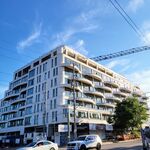BMO
Senior Member
It's definitely an idea. Toronto is clearly going to continue its high-rise construction boom. If you give developers specific places to go nuts, they'll do it. It's better to concentrate the really high density stuff to a few select locations, and then have the rest of the city open to mid-rise infill, etc.
I liek this thought...you know before, I used to have the mentality of wanting to place high density all over the place, but i've slowly been changing my mind, and think the city shoudl really focus on midrise and a mixture of residential types, e.i. detached housing mixed in with high-rise and mid-rise. Essentially if everywhere in Toronto could look liek the area between Eglinton and Davisvill, I'd be content with that.




